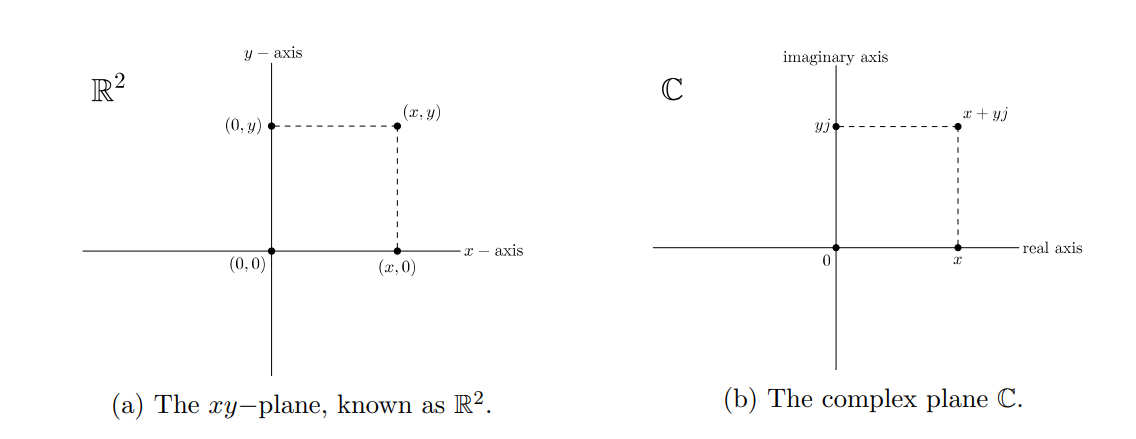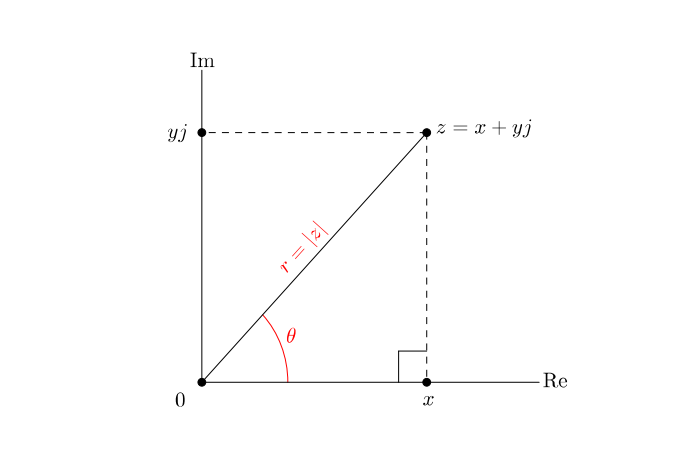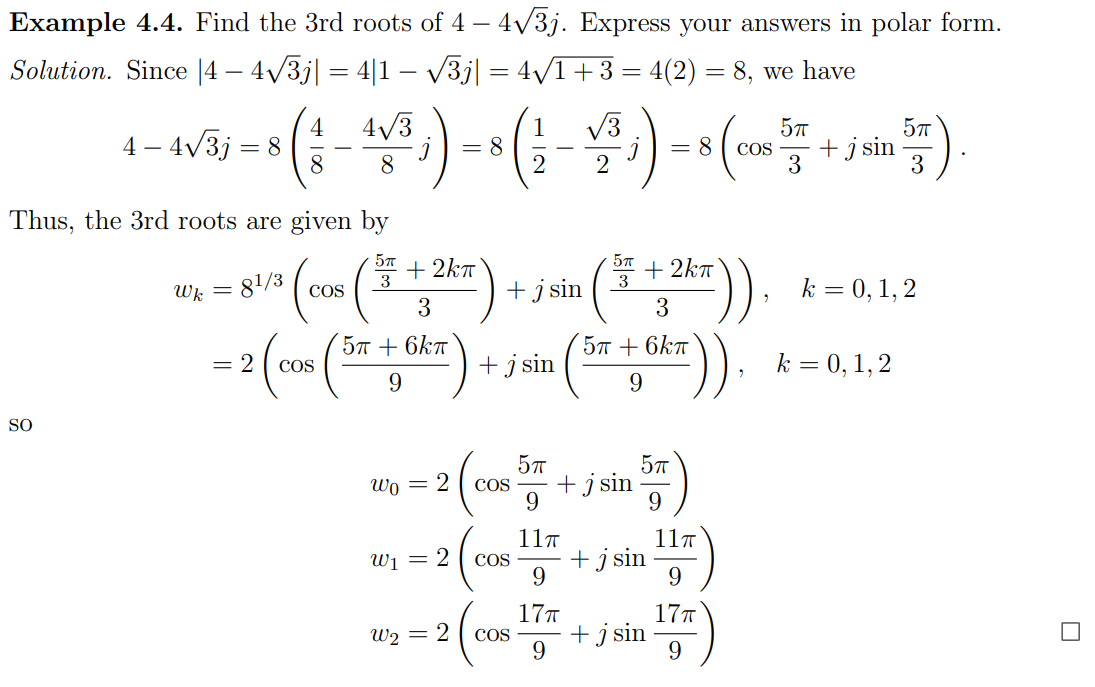Complex Number
Three ways to represent a complex number.
Standard Form
Definition: A complex number in standard form is an expression of the form where and satisfies . The set of all complex numbers is denoted by
Note
Note that I learned to use rather than since that letter is used in the modelling of electric networks.
Danger
is NOT equal to . If it were, then
Real and Imaginary Parts
Let with .
Inverse of Complex Number
For , , exists if and only if . Besides, when it exists,
Conjugate
The complex conjugate of with is
Properties of Conjugates. Let with where . Then
Modulus
The modulus of with is the nonnegative real number
Modulus
The modulus is basically the absolute value if we are dealing with real numbers, and this is actually where the modulus comes from.
Properties of Modulus. Let . Then
Geometry of Graphically

Polar Form
There is another way we can represent imaginary numbers, which will be super useful for complex multiplication and division.
We invent this plot, where the x-axis are the Real numbers and y-axis are the imaginary numbers.
 We see from the above image that
We see from the above image that
The polar form of a complex number is given by where and is an argument of .
Polar Form: Use
z=r\angle\thetaWhen I first learned polar form in MATH115, we always wrote it as , but this is super long. Instead, just use which provides the same amount of information in a very concise way.
Exercise: Write in polar form.
Since we have and , we know that Answer:
Polar Multiplication and Division
Multiplication Division
The MATH115 notation…
Powers of Complex Numbers
de Moivre’s Theorem. If , then for any .
Complex nth Roots
Let be nonzero, and let n be a positive integer. Then the n distinct nth roots of z are given by
for

Complex Exponential Form
Why is this form useful?
Exponential form is really cool, because we can actually start relating exponentials with sins and angles!
Derived from Euler Formula, the complex exponential form of is given by
Complex Polynomials
Theorem 5.2. Let be a real polynomial. If is a root of , then so too is .